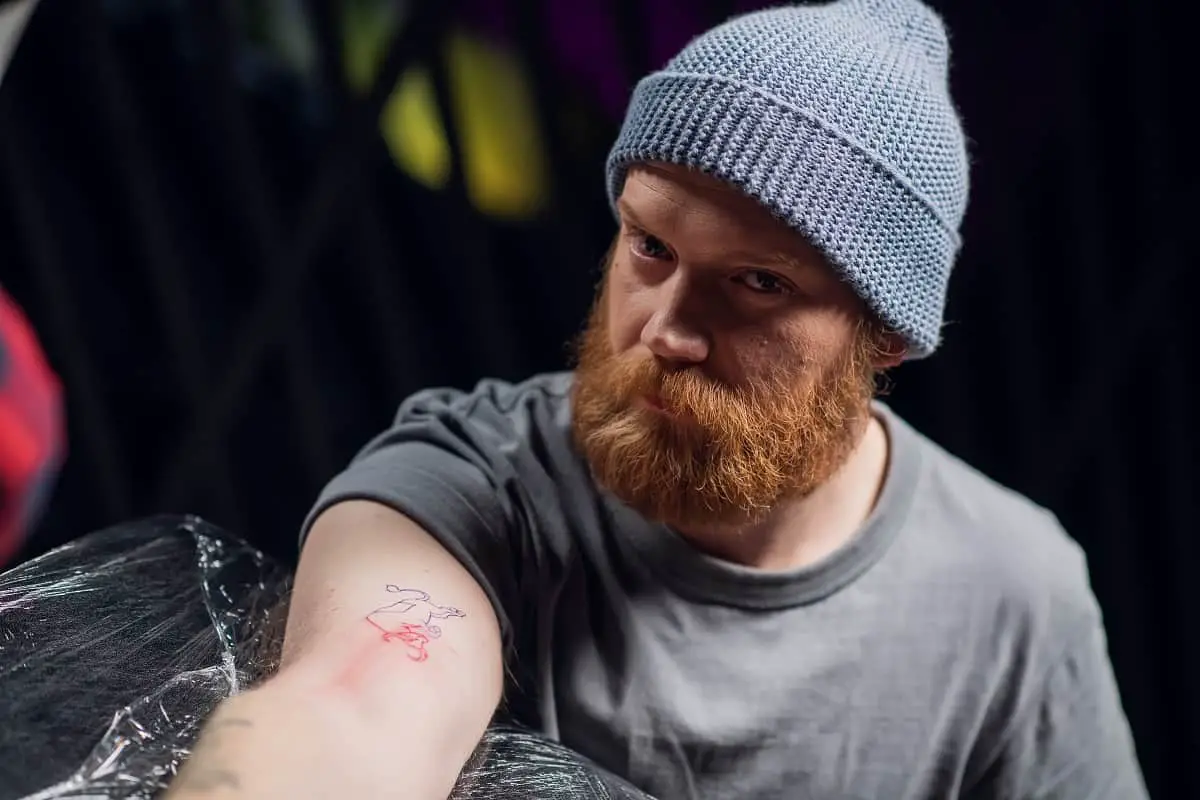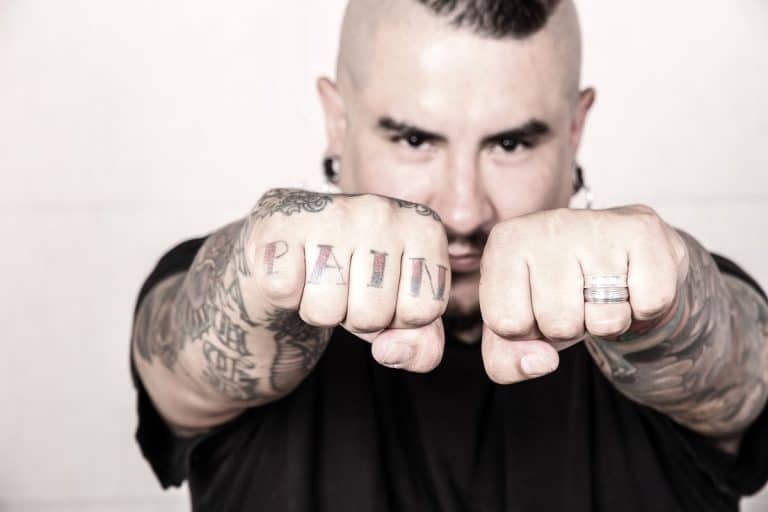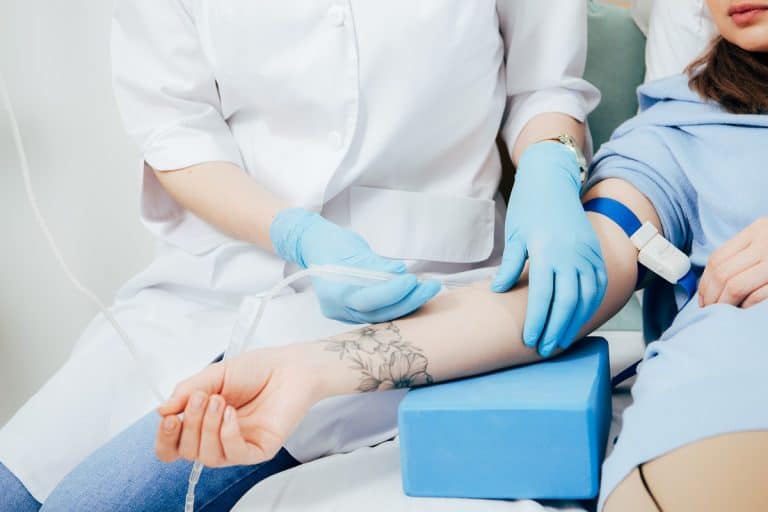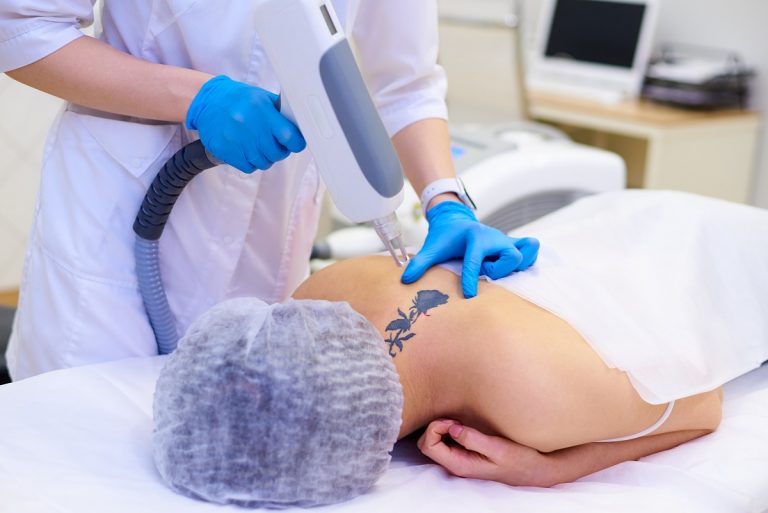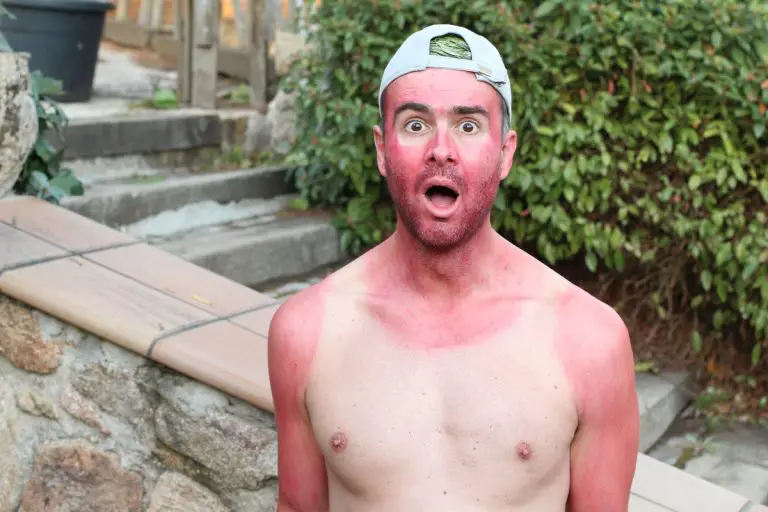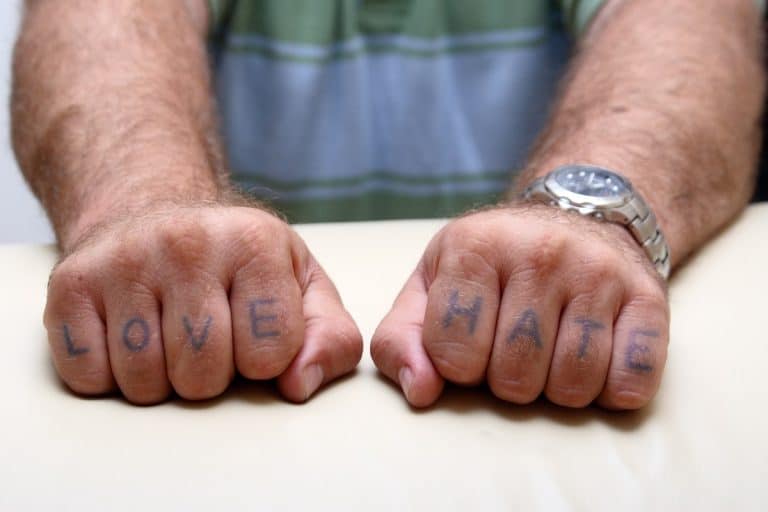What Does a Tattoo Feel Like? First Timer’s Guide to a First Tattoo Sesh and Sensation to Expect
Have you ever just sat in your room and wondered what certain things feel like? For example, how does it feel to parachute, ski down a steep hill, pet a lion, travel around the world on a bike, a so much more. Some things are just universally first-time things for the majority of people, so it is no wonder we all keep imagining ourselves doing these incredibly awesome things.
One of the things people also tend to wonder about is tattoos. People who have never gotten a tattoo often ask those with tattoos; What does it feel like? Or, does it hurt a lot? It is natural to be curious about such a thing; after all, an increasing number of people are getting tattooed, so it is only natural to start wondering how would it be for yourself to get inked as well.
In the following paragraphs, we’ll attempt to describe every sensation you can expect when it comes to tattooing. We’ll try to bring it closer to the first-timers so you can be fully ready once the time comes for you to finally get tattooed. Therefore, without further ado, let’s get started!
What Does A Tattoo Feel Like: Getting a Tattoo and Sensations To Expect
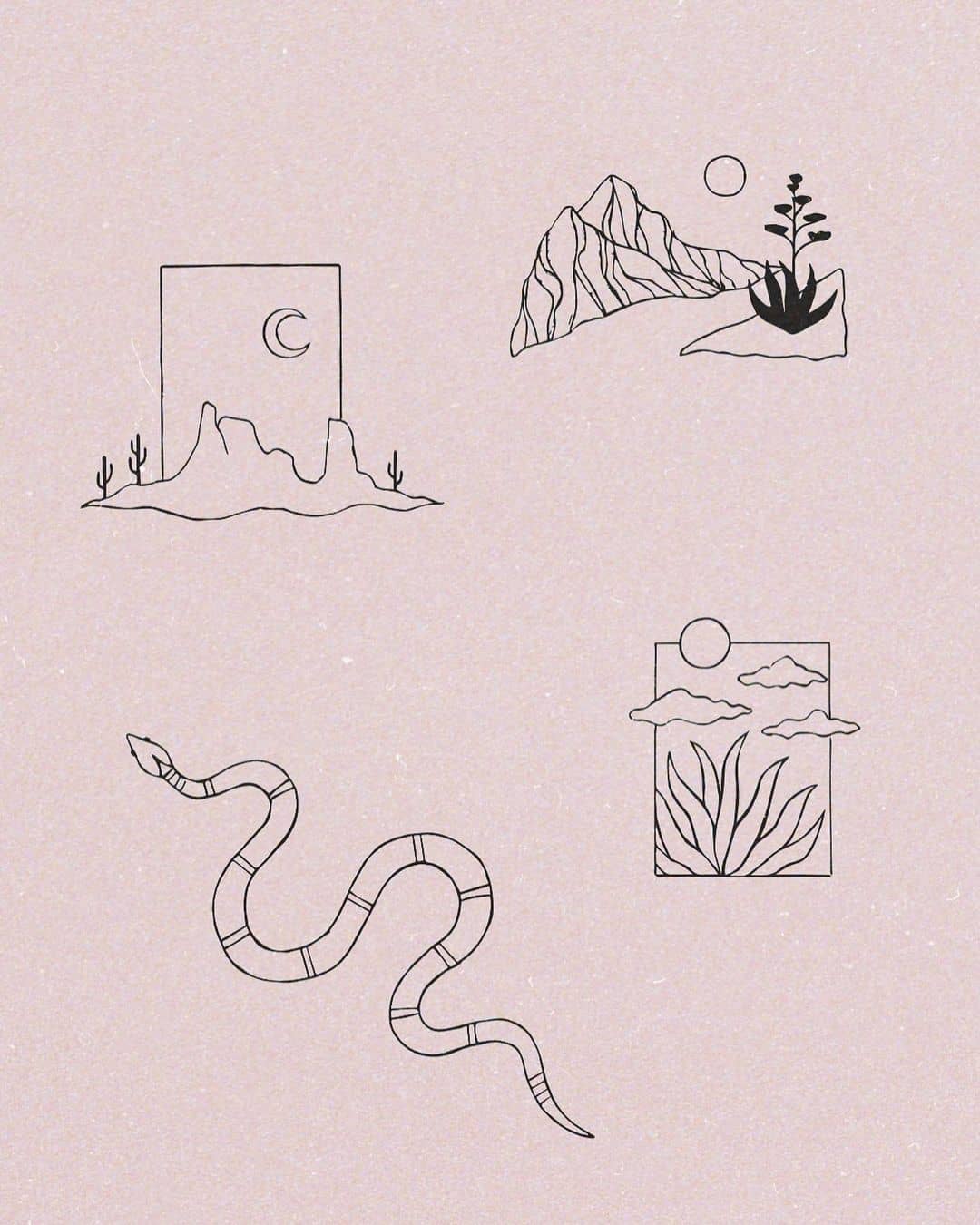
General Tattooing Process/Procedure
Before we get into details, we need to first go through the general procedure of getting a tattoo and what it looks like. So, you’ll be at the tattoo studio ad a reputable, professional tattoo artist will have you ready on a tattoo chair/table, with all of the necessary, specialized equipment. From this point the procedure develops as follows;
- The area where the tattoo is to be placed needs to be clean and shaved. If you didn’t shave the area, the tattoo artist will do it for you. The tattooist will be extra careful and gentle, as to avoid razor cuts. Then, the area will be cleaned and sterilized with rubbing alcohol. This shouldn’t cause any pain or discomfort; it is a pretty straightforward first step.
- Then, the tattoo artist will take the stencil of your tattoo design and transfer it into the designated tattooing area on your body. To do this, they will need to apply it using water/moisture, in case you may dislike the placement and the tattooist needs to clean the skin and place the stencil elsewhere. At this point, you may experience a bit of tickling, but that’s about it.
- Once the placement is approved and ready, the tattooist will start outlining the tattoo. This is when you’ll start feeling a bit of stinging, burning, or pricking. It shouldn’t hurt too much though; the tattooists are extra gentle and careful with this part, especially if it’s your first time. They will take breaks when needed. The best thing you can do is take a deep breath and relax.
- Once the outline is done, if your tattoo doesn’t require more work, you’re pretty much done as well. However, your tattoo requires coloring and shading, you’ll have to stick around a bit longer. Shading and coloring are done in the same way as outlining, but with different, more specialized tattoo needles. Many claim that shading and coloring hurt much less than the outlining of the tattoo.
- Once the shading and coloring are done, your tattoo is complete and it is ready to be cleaned, and covered. The tattoo artist will apply a thin layer of ointment over the tattoo and then apply a plastic cover or a specialized tattoo bandage.
- From here, you’ll be entering the ‘aftercare’ process of your tattoo experience. This is the period in which you have to take care of your tattoo while it heals. You’ll be experiencing some light pain in the first 2/3 days, as well as overall discomfort. However, as the tattoo heals, properly, of course, the pain should subside and disappear. However, the scabbing of the skin will cause some itching, which you have to ignore. You should NEVER scratch an itchy tattoo since you may introduce bacteria and dirt to the skin, causing a tattoo infection.
- The healing period should last up to one month. As time goes by you’ll be feeling less discomfort in regards to the tattoo. Once it fully heals, your skin will feel as good as new.
Specific Tattoo Pain Expectations
https://www.instagram.com/p/CdidIByL1nN/
The previous paragraphs covered some of the general tattoo procedures and sensations you can expect to feel. Surely, personal experience always varies, mostly because each one of us has different pain tolerance. However, when it comes to tattoo pain, we can all agree that some parts of the body hurt significantly more in regard to tattooing than others.
That is because if the skin is thinner or has more nerve endings, it will surely hurt more during tattooing than other, thicker skin/body areas. A forehead tattoo, for example, will hurt significantly more than a buttock tattoo. So, let’s talk about specific tattoo pain expectations as well, so you can be fully ready for your first-time ink experience;
- The most painful body parts for tattoos – Rib cage, head, private parts, ankles, shins, knees (both front and back of the knees), chest, and inner shoulders
Because these body parts have the thinnest skin on the body, millions of nerve endings as well as cover the bones, they surely are a challenge for a tattoo. They hurt the most, no doubt about that. There isn’t much flesh to serve as a cushion for the needle and the machine buzzing. The pain can be truly serious, to the extent that some tattoo artists won’t even perform tattoos on these body parts. If you’re a first-timer, we definitely do NOT recommend you get a tattoo on any of these body parts; the pain is simply too much to handle.
- The more bearable body parts for tattoos, which can still be pretty painful – feet, fingers, toes, hands, hips, center of the back
Now, these body parts hurt when it comes to tattooing, by following the public opinion, they hurt significantly less compared to the previous group. These body parts are covered in thin skin layers, over bones, with numerous nerve endings; this generally equals pain. However, some people manage to go through such tattooing sessions. Others experience intense pain and even spasms in response to the pain. We still wouldn’t advise the first-timers to get tattoos anywhere on these body parts, since the pain levels, though a bit more bearable, are still high.
- The low to moderate pain levels body parts – outer thighs, outer shoulders, biceps, upper and lower back, forearms, calves, buttock area
Because in these areas the skin is significantly thicker and it doesn’t cover the bones directly, the pain one can expect to feel during tattooing is generally low to moderate. Of course, this again varies from one person to the other.
But, you can generally expect lower pain levels because the needle won’t hit the bone thanks to the thicker skin and fat accumulation in these body parts. If it’s your first time getting a tattoo, we strongly recommend you go for one of these body parts, and then slowly upgrade your tattoo adventure to more challenging and painful areas.
Read More: Tattoo Pain Chart (Scale): What Is The Most (Least) Painful Place (Male & Female)
Factors That Affect Levels of Pain
As we previously mentioned, not everyone experiences the same pain levels during tattooing, and that is perfectly normal. Some people have higher pain tolerance, while others don’t. In some cases, the simple rules of biology affect our pain tolerance, or simple things, like the lifestyle we lead or even our general health can make us feel pain more or less. Therefore, let’s discuss the main factors that can affect your pain levels during a tattoo session;
- Tattoo experience – it is no doubt that your first tattoo will be the one that hurts the most. Because you have no previous experience, and you don’t know what to expect, your psychological attitude toward the new experience can make you more alert and sensitive to the overall sensations you’re about to feel. The more tattoos you get, the less painful will the procedure be.
- Tattoo artist’s experience – getting your tattoo done by a professional tattoo artist is important on so many levels. A skilled tattoo artist will use their experience and techniques to make the tattoo experience as pleasant as possible. They will be gentle, take necessary breaks and follow your response to the overall situation. They will also handle your tattoo with the utmost care, using disinfected, clean tools, and working in a disinfected and clean environment.
- Your mental state – people who come to a tattoo session overwhelmed by stress and anxiety are more likely to experience high pain levels compared to those who are mildly nervous or completely chill. Stress and anxiety inhibit your body’s natural pain coping mechanism, which is why you’re likely to experience pain in situations that shouldn’t be painful at all. So, before your tattoo sessions try to relax; take a few deep breaths, shake the anxiety off, and simply enjoy the experience as much as you can.
- Your sex – though controversial for such a long time, the topic of women and men experiencing pain differently has been a part of the general conversation for a reason. Some studies have shown that women experience higher pain levels after certain invasive procedures compared to men. We’re not saying that you as a woman will feel more pain, or less pain than a man during tattooing. But, these factors can definitely affect your overall pain tolerance.
Post-Tattoo – What To Expect After The Procedure?
Once your tattoo is done and nicely covered, you’ll receive a set of aftercare instructions provided by your tattoo artist. Those instructions will be your guide through the following period in which your tattoo is supposed to heal. You’ll be instructed on how to clean your tattoo, how frequently to wash it and which products to use, what kinds of clothes to wear, etc.
The tattooist will also talk about the potential adverse effects of getting a tattoo or not taking care of it properly, like getting a tattoo infection, tattoo raising, leaking, allergic reaction to the ink, etc.
Now, your first two days after the tattoo should look like this; the tattoo will be bleeding and oozing (ink and plasma), for a day or two, and then it will stop. You will need to wash/clean your tattoo lightly at this point and either reapply the bandage or keep it uncovered to dry.
Either way, you should not apply any ointments or creams until your tattoo starts closing and until it is dry; no oozing or bleeding. This should all be pretty painless, but certain levels of discomfort are normal. Many describe the initial healing stage as experiencing a sunburn.
After a few days have passed, the tattooed skin will calm down, and start closing, at which point you can start cleaning the tattoo and using ointments up to twice a day, maximum. When the scabs start to form, you will experience intense itching. It is essential to refrain from scratching the tattoo! Otherwise, you may introduce bacteria and dirt to the tattoo and unintentionally cause a pretty painful tattoo infection.
Now, if your tattoos keep bleeding and oozing for more than 2 days, or if the initial pain keeps getting more intense even days after the procedure, you need to see a doctor as soon as possible. You may be experiencing an allergic reaction to the ink or a tattoo infection. Make sure to also contact your tattoo artist and explain the situation. You’ll be checked by the doctor and probably receive a round of antibiotics to calm down the infections. Now, chances are that your tattoo might be messed up once the infection subsides, so always make sure to get tattooed by an experienced professional.
Read More: Tattoo Pain Management: How to Make Tattoos Less Painful
Final Thoughts
When getting a tattoo, you can expect to experience at least some degree of pain; it is after all a procedure where a tattoo needle pokes your skin at a rate of up to 3000 times per minute. A new tattoo isn’t considered to be a wound for no reason; your body does go through a certain trauma and it will respond in some degree of pain. But, when the tattoo is done by a professional tattoo artist, you can expect them to be highly gentle, especially if it’s your first time.
We strongly advise you to consider the placement of the tattoo, your own sensitivity to pain, your skin’s sensitivity, as well as your mental state when getting a tattoo. All of these can affect your pain tolerance. But, don’t be discouraged; after all, your tattoo will be done quickly and you’ll be happy to see an incredible piece of art right there on your body. And then you’ll think „Well, this was worth it!“.
- Safe, non-toxic plant-based temporary tattoos made with 100% high-definition printing for a realistic look without the pain
- Easy to apply and remove - just stick for 20 seconds then take off
- Set includes 5 sheets with 17 fun, delicate designs like hearts, cats, smiles, suns, moons, and more
- Waterproof and long-lasting - stays on up to 2 weeks of wear
- Fashionable for women, men, girls and boys
- Place on arm, wrist, neck, leg, finger, waist, foot and more
- Great for parties, birthdays, and showing your unique style

